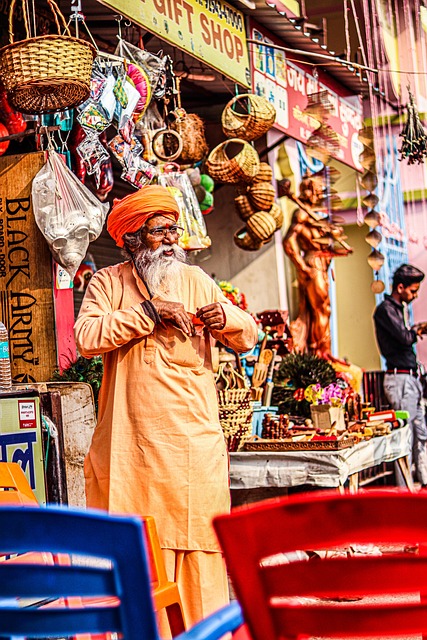Laos Market Guide: Community Sales & Local Shopping
Explore Laos's vibrant market culture with this practical guide to community sales and local shopping. Learn how traditional markets and modern retail coexist, discover popular market spots in Vientiane and Luang Prabang, and get smart tips on bargaining, timing, and connecting with local vendors to find authentic goods and good value.

Laos offers a richly textured retail scene where time-honored market traditions meet growing modern commerce. While Western-style garage sales are rare, the same spirit—casual neighborhood trading, personal interactions, and flexible pricing—thrives in community markets and pop-up events. This guide explains how shopping works in Laos, where to go, and how to make the most of local buying customs.
Traditional markets and modern retail
Cities like Vientiane and Luang Prabang show how the country’s retail landscape is shifting. Traditional markets remain central to daily life, supplying fresh food, textiles, and handicrafts while fostering social connections between buyers and sellers. At the same time, shopping malls and specialty stores are expanding in urban centers, offering convenience and international brands.
Even as retail modernizes, the interpersonal aspects associated with garage sales persist in market settings. Stallholders often recognize repeat customers, develop rapport, and expect a degree of price negotiation. The atmosphere is informal: vendors may share stories about their products, recommend local specialties, and adjust prices based on familiarity and the bargaining process.
Community-based selling practices
Instead of many individual roadside garage sales, Laotians commonly sell secondhand goods and household items through community markets, charity bazaars, and organized pop-up events. These gatherings bring together a diverse array of sellers under one roof or in a shared outdoor space, blending the variety of a flea market with the communal feel of neighborhood trade.
Community markets can be regular weekly events, seasonal fairs tied to festivals, or ad hoc sales arranged by local groups. They often include artisans, farmers, and families clearing out excess goods. Because multiple vendors operate side by side, shoppers can compare quality and prices easily, and finds can range from practical household items to unique handicrafts and vintage textiles.
Smart shopping tips for local markets
Approaching markets with cultural awareness improves both the experience and the outcome. Bargaining is expected in many stalls, but it should be done politely and with respect for the seller. Start with a friendly greeting; a little Lao goes a long way. Simple phrases like sabaidee (hello) and khop chai (thank you) help build rapport.
Timing matters: early mornings usually present the best selection, especially for fresh produce and newly-arrived crafts. Late afternoon can bring better deals as vendors prefer to sell remaining stock rather than pack it away. Observe the stall, check product quality, and then make an offer—starting lower than your maximum but not offensively low.
Bring cash in small denominations, as many market sellers do not accept cards. If you plan to buy multiple items, suggest a package price rather than negotiating each item separately. Finally, be mindful of local customs: maintain a friendly demeanor, avoid aggressive bargaining, and accept that some items, particularly handcrafted goods, have fixed prices reflecting the time and skill involved.
| Market Name | Location | Best Known For |
|---|---|---|
| Morning Market | Vientiane | Textiles, handicrafts |
| Talat Sao | Vientiane | Electronics, clothing |
| Night Market | Luang Prabang | Souvenirs, local crafts |
| Phosy Market | Luang Prabang | Fresh goods, household items |
Prices, rates, or cost estimates mentioned in this article are based on the latest available information but may change over time. Independent research is advised before making financial decisions.
Understanding price expectations
Markets and community sales usually offer better value than modern retail outlets, but price flexibility varies by item and vendor. Bargaining is a part of the culture, yet knowing a fair price range will help you avoid underpaying or overpaying. Before bargaining, take a quick survey of nearby stalls to gauge typical prices and product quality.
Set a budget and be willing to walk away if negotiations stall—vendors often call you back with a lower price. For higher-value purchases, inspect items carefully for defects or wear. When buying food or perishables, check freshness and storage conditions. If you are purchasing handmade crafts, ask about materials and the maker’s background; that context can justify the price and enrich the buying experience.
Making the most of the market experience
Shopping in Laos is as much cultural immersion as it is commerce. Markets are social hubs where locals meet, exchange news, and enjoy street food. Take time to explore stalls, sample local snacks, and chat with vendors to learn the stories behind their products. Photographs are often welcome, but ask permission first, especially if photographing people.
If you prefer a more organized approach, look for established weekend markets or community bazaars promoted by expat groups or tourism offices. These events can offer a curated mix of goods with clearer pricing and sometimes accept electronic payments.
Conclusion
The retail landscape in Laos is evolving, but the heart of shopping remains rooted in community. While Western-style garage sales are uncommon, neighborhood markets, pop-ups, and traditional stalls capture the same friendly, personal spirit. By understanding local customs, timing your visits, and practicing respectful bargaining, you can enjoy authentic shopping experiences that reflect Laos’s culture and offer good value. Whether hunting for textiles in Vientiane or handicrafts in Luang Prabang, these markets provide memorable finds and genuine connections with local sellers.






